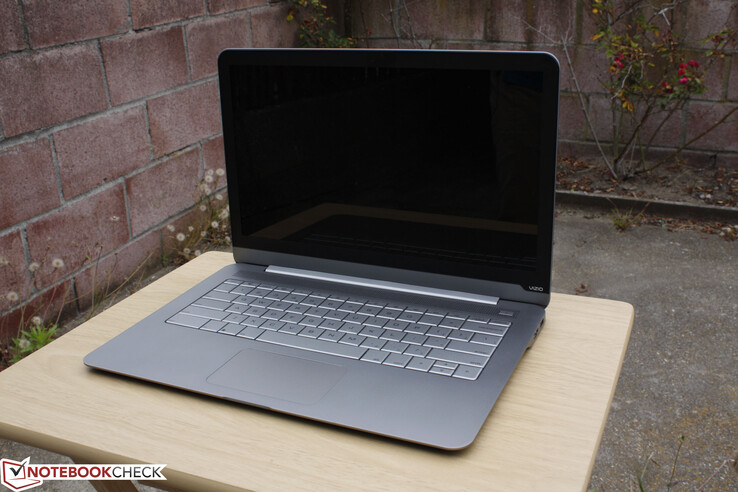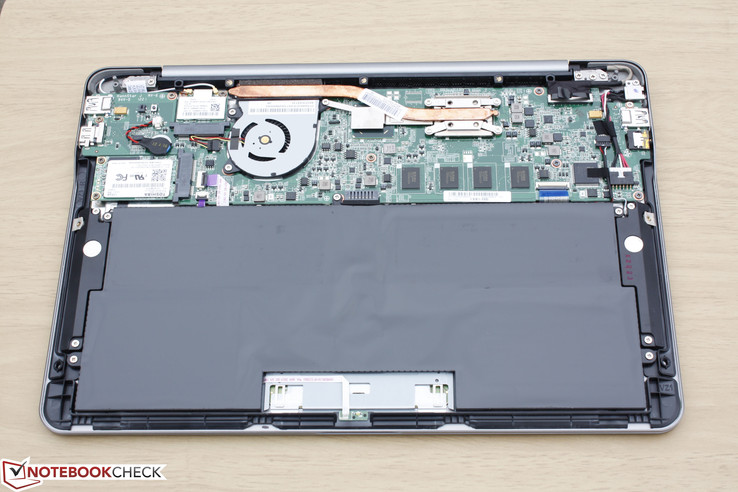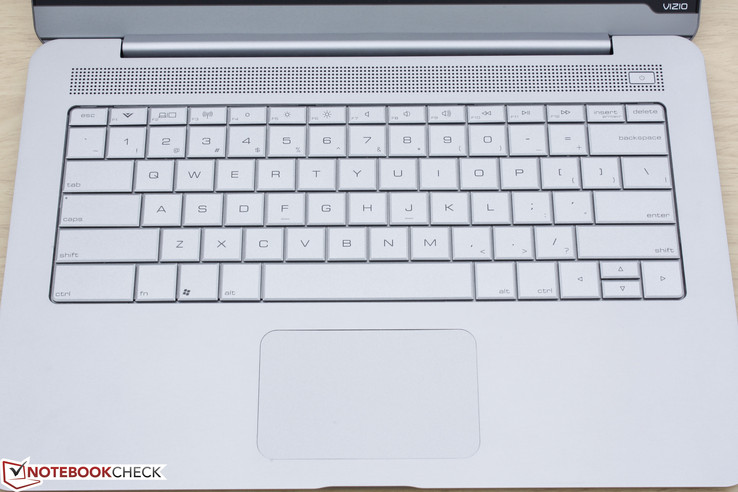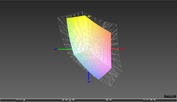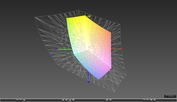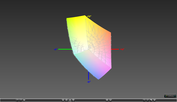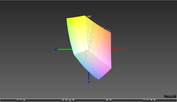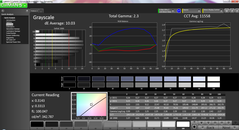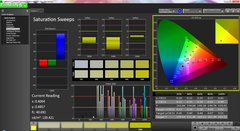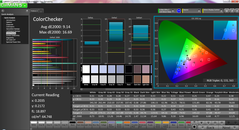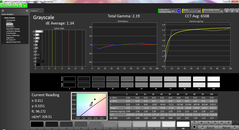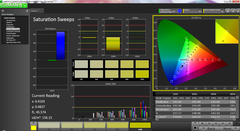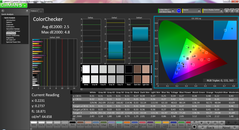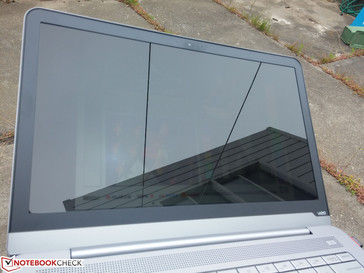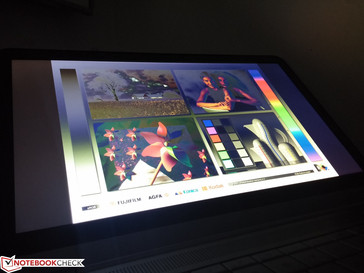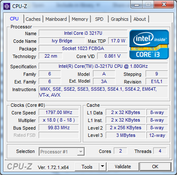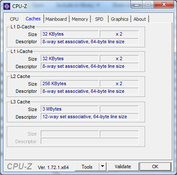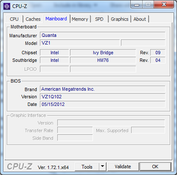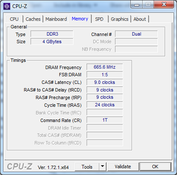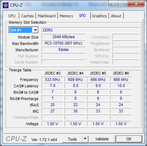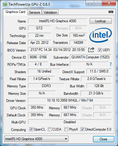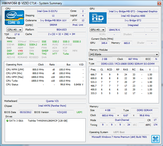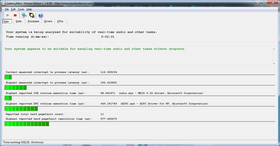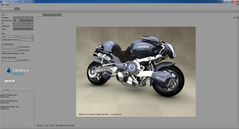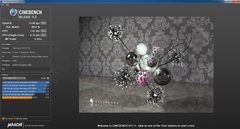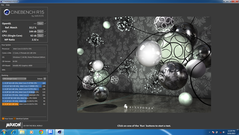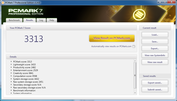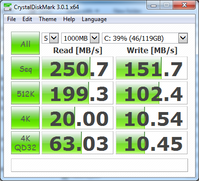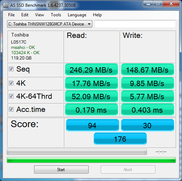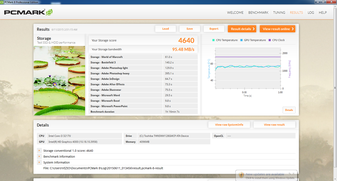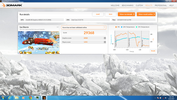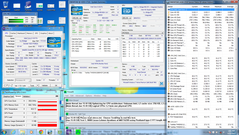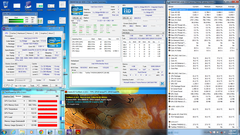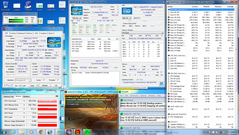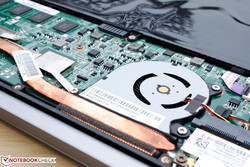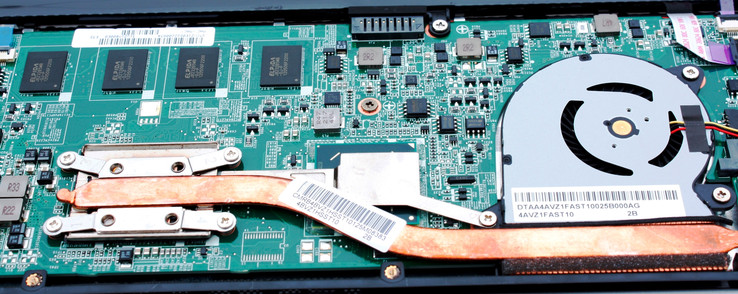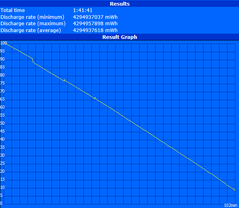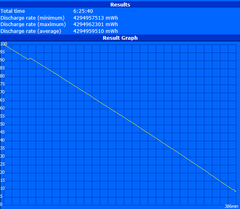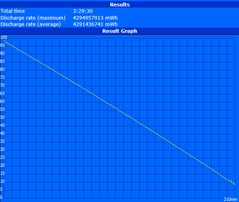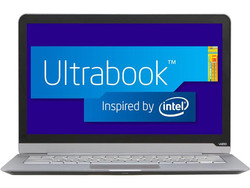Vizio CT14-A0 Notebook Review
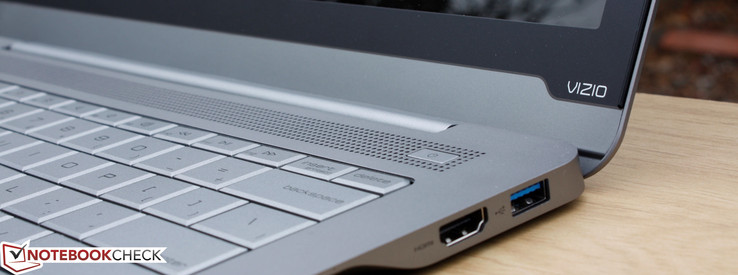
Vizio entered the laptop world in 2012 with its 14-inch and 15-inch CT models that didn't quite shakeup the laptop industry as the company did to the TV industry years prior. Since then, the California-based electronics manufacturer has been quiet about any new updates, hardware, or configurations. It's quite unlikely that Vizio will relaunch a new series due to the poor sales performance of its first CT models.
The model in review today is the CT14-A0, which is one of the very first to come from Vizio. We'll take a closer look at what worked and what didn't in our short overview of the model and series in general.
Case
The CT14 utilizes a unibody anodized aluminum design that looks very good even when up against more recent Ultrabooks. Corners and edges are sharp and distinct and surfaces are smooth to the touch. Fingerprints do not accumulate or show very easily on the aluminum surfaces. The belly of the notebook is aluminum as well, but its surface includes a rubberized layer that attracts dust and grease quite easily. It's not all metal, however, as the inner display bezel has a hard plastic feel.
Case quality is good considering this is Vizio's first shot at a notebook. The base and lid are quite rigid with no major weak areas to speak of. Pushing down on the outer lid only produces a very slight depression, though applying that same pressure on the center of the keyboard causes a more noticeable depression, so improvements could still be made. The single bar hinge is taut up to its 135 degree angle and the lid shows better than average resistance to twisting.
Compared to many other 14-inch notebooks, the CT14 is both smaller and thinner. Whereas most other notebooks in our comparison below are 2 kg or heavier, the Vizio is much closer to 1.5 kg. Its thickness of 17 mm is also even thinner than the Dell Inspiron 14. Definitely not a bad start from a company who started off selling TVs.
Connectivity
Available ports include two USB 3.0 ports and a full-size HDMI port, all of which are standard and expected from Ultrabooks. What is overtly missing, however, is a card reader. Users will need to rely on dongles for commonly used features like SD cards and Ethernet.
Communication
The Atheros AR5BWB222 half-mini PCIe card provides 802.11n and Bluetooth connectivity. Transfer rates of up to 300 mbps are supported and we experienced no issues connecting to a standard home network. There is no built-in support for WWAN or GPS.
Accessories
There are no dedicated extras for the CT14. Vizio offers HDMI cables at most with no sleeves, mice, or even dongles to make up for the missing SD reader and Ethernet port.
Maintenance
The panel underneath pops out easily after removing a set of 7 small Torx screws. Expandability options are low, however, as there are no addition storage slots and RAM is soldered directly onto the board.
Warranty
The standard one-year warranty applies for new purchases or 90 days for refurbished purchases. Vizio also offers a zero dead pixel policy that applies for both its TVs and PCs.
Input Devices
Keyboard
The beveled keyboard is adequately sized (29 x 10.5 cm), but its keys have horrible feedback and very shallow travel. The keys feel soft and almost uncomfortable to type on, so it will likely take some time for the user to become accustomed to. The bright side is that clatter and noise are very low as a result of the light feedback.
Two of the four Arrow keys are reduced in size as is common on smaller notebooks. This makes feedback even worse and more difficult to use. The Lenovo Flex 2 14 avoids this problem by having four full-size Arrow keys.
Touchpad
The touchpad feels a bit more comfortable to use than the keyboard, though not by much. It suffers from the same shallow travel with soft feedback. Tapping the pad to enter a mouse click results in a very annoying lag time where it takes a split second before the action appears onscreen when it should be immediate. Otherwise, both scrolling and glide are smooth with no cursor issues. Its size (10 x 6 cm) is adequate and multi-touch gestures are supported via the Sentelic software.
Display
Vizio made its name by selling great screens at affordable prices, so it's unsurprising that the display here is very good considering the price. The glossy 900p screen is crisp with no noise or grains and has an excellent contrast of about 1000:1. A slight screen-door effect is noticeable if looking up-close, though this may be attributed to the sub-1080p resolution. Especially compared to budget 1366 x 768 displays, the Vizio here offers a cleaner look.
Brightness is also above average at 300 nits. This is much brighter than competing 14-inch models like the Lenovo Z40 or Dell Inspiron 14. The strong backlight helps in overcoming the super glossy screen as much as possible.
| |||||||||||||||||||||||||
Brightness Distribution: 79 %
Center on Battery: 332.7 cd/m²
Contrast: 1002:1 (Black: 0.332 cd/m²)
ΔE ColorChecker Calman: 9.14 | ∀{0.5-29.43 Ø4.78}
ΔE Greyscale Calman: 10.03 | ∀{0.09-98 Ø5}
62.9% sRGB (Argyll 1.6.3 3D)
39.9% AdobeRGB 1998 (Argyll 1.6.3 3D)
43.35% AdobeRGB 1998 (Argyll 3D)
63.1% sRGB (Argyll 3D)
41.96% Display P3 (Argyll 3D)
Gamma: 2.3
CCT: 11558 K
| Vizio CT14-A0 | Lenovo IdeaPad Z40-59422614 | Asus VivoBook S451LB-CA072H | Lenovo Flex 2 14 | Dell Inspiron 14-7437 | |
|---|---|---|---|---|---|
| Display | -6% | -5% | -8% | -6% | |
| Display P3 Coverage (%) | 41.96 | 39.72 -5% | 39.87 -5% | 38.81 -8% | 39.57 -6% |
| sRGB Coverage (%) | 63.1 | 58.6 -7% | 59.9 -5% | 58.2 -8% | 58.4 -7% |
| AdobeRGB 1998 Coverage (%) | 43.35 | 41.2 -5% | 41.22 -5% | 40.12 -7% | 40.61 -6% |
| Screen | -28% | 8% | 12% | -16% | |
| Brightness middle (cd/m²) | 332.7 | 239.9 -28% | 208 -37% | 216 -35% | 197 -41% |
| Brightness (cd/m²) | 307 | 225 -27% | 197 -36% | 215 -30% | 190 -38% |
| Brightness Distribution (%) | 79 | 87 10% | 91 15% | 88 11% | 82 4% |
| Black Level * (cd/m²) | 0.332 | 0.676 -104% | 0.25 25% | 0.21 37% | 0.28 16% |
| Contrast (:1) | 1002 | 355 -65% | 832 -17% | 1029 3% | 704 -30% |
| Colorchecker dE 2000 * | 9.14 | 9.47 -4% | 4.11 55% | 4.56 50% | 10.51 -15% |
| Greyscale dE 2000 * | 10.03 | 10.04 -0% | 4.05 60% | 3.51 65% | 11.46 -14% |
| Gamma | 2.3 96% | 2.01 109% | 2.31 95% | 2.53 87% | 2.32 95% |
| CCT | 11558 56% | 12000 54% | 6968 93% | 6401 102% | 7116 91% |
| Color Space (Percent of AdobeRGB 1998) (%) | 39.9 | 37.7 -6% | 38 -5% | 37 -7% | 37.6 -6% |
| Color Space (Percent of sRGB) (%) | 62.9 | ||||
| Total Average (Program / Settings) | -17% /
-22% | 2% /
4% | 2% /
6% | -11% /
-13% |
* ... smaller is better
Further color analyses with a spectrophotometer reveal inaccurate colors and grayscale out-of-the-box. The Lenovo Flex 2 and Asus Vivobook S451 both ship with more accurate displays in comparison. A quick calibration will improve grayscale and colors dramatically on the Vizio. Otherwise, color temperature is overly cool by default. Colors will still become relatively more inaccurate at higher saturation levels since sRGB coverage is limited.
Outdoor usability is limited despite the high brightness due to the very glossy screen. Texts and images become quickly washed out on an overcast day and users will be constantly adjusting the display to reduce glare and for the best viewing angle.
Viewing angles are again limited because of the TN panel. This is largely a non-issue for the sole user looking straight at the screen. Competing convertibles and detachables are more likely to carry IPS panels in order to accommodate their multiple viewing modes.
Performance
A lowly Core i3-3217U powers the CT14-A0, though higher options are available on A1, A2, A3, and A4 configurations. This ULV Ivy Bridge CPU runs stable at 1.8 GHz with no Turbo Boost and includes the integrated HD 4000 GPU. More technical specifications and benchmarks on this dual-core processor can be found on our dedicated CPU page here.
System RAM is provided by on-board Elpida modules for a total of 4 GB. As previously mentioned, there is no room for expansion. LatencyMon shows no latency spikes when wireless radios are active.
Processor
Synthetic CPU benchmarks like CineBench place the Vizio alongside other notebooks sporting the same i3-3217U processor, such as the IdeaPad U510 and Aspire E1-470P. General performance is similar to middle-class processors from the Core 2 Duo generation, such as the Core 2 Duo T9550, while drawing half the TDP (35 W vs. 17 W) and two-thirds of the core clock (2600 MHz vs. 1800 MHz). Thus, the Core i3 here excels greatly in performance-per-watt rather than raw performance.
When compared to AMD processors, the i3-3217U is most similar to the A6-5200 and A8-6410 in multi-tasking performance.
System Performance
The Core i3 CPU and its integrated graphics may not be the fastest around, but the primary SSD helps the Vizio excel in everyday tasks like browsing, word processing, and other less intensive applications. PCMark 7 puts the notebook alongside models like the ThinkPad T420s and Dell Inspiron 15R. Subjectively, navigation is quick, mostly lag-free, and almost instantaneous.
| PCMark 7 Score | 3313 points | |
| PCMark 8 Home Score Accelerated v2 | 2016 points | |
| PCMark 8 Creative Score Accelerated v2 | 1703 points | |
| PCMark 8 Work Score Accelerated v2 | 2892 points | |
Help | ||
Storage Devices
The sole mSATA slot is limited to SATA II speeds, so CrystalDiskMark records a transfer rate of just up to ~250 MB/s at the best of conditions. This is compared to most SATA III SSDs where sequential transfer rates can be as high as 500 MB/s. To see how the Toshiba THNSNW128GMCP SSD performs against other drives, see our comparison table here.
No secondary storage options are available as is common on most Ultrabooks.
GPU Performance
The integrated HD 4000 GPU is included with most Ivy Bridge CPUs and is generally on par with the older Nvidia GT 330M. Its 3DMark 11 score of 631 points is similar to other older notebooks sporting the same GPU, such as the Dell XPS 18 and Acer Aspire M3-481.
Gaming performance is limited to the lowest settings on almost all titles. Newer and more demanding titles like Advanced Warfare or Assassin's Creed Unity will not run properly on this notebook or will run at unplayable frame rates at best.
More technical information and benchmarks on the HD 4000 can be found on our dedicated GPU page here.
| 3DMark 11 Performance | 631 points | |
| 3DMark Ice Storm Standard Score | 29368 points | |
| 3DMark Cloud Gate Standard Score | 3354 points | |
| 3DMark Fire Strike Score | 466 points | |
Help | ||
Stress Test
We use synthetic stress benchmarks to identify any throttling or stability issues on the Vizio CT14. With just Prime95 active to stress the CPU, the i3-3217U runs at a constant 1.8 GHz and plateaus at a cool ~65 C. With just FurMark active to stress the GPU, the HD 4000 runs at a constant 900 MHz with a core temperature reaching above 80 C. Full stress with both Prime95 and FurMark will cause the GPU speed to drop further to just its base 350 MHz after a few minutes. The CPU remains steady at its base 1.8 GHz clock rate, though core temperature plateaus at a much higher ~85 C under these conditions.
While the GPU throttles when under such extreme stress levels, it performs much more consistently under real-world gaming conditions. The HD 4000 runs in the 950 to 1050 MHz range when Unigine Heaven is active and core temperature plateaus at a cooler ~75 C to 80 C. Running on battery power will not reduce CPU or GPU performance.
Emissions
System Noise
The CT14 utilizes a single small fan and heat pipe for the CPU. The system is silent under low loads at around 30 dB(A), but the fan will become audible after a short few minutes of use to around 33 dB(A). It infrequently pulsates between 30 and 33 dB(A), which can still be irksome when watching movies.
Higher synthetic processing loads will steadily bump fan noise up to 41 dB(A), which is a common maximum for Ultrabooks. This maximum is uncommon during everyday tasks, however, so most users will only experience a range of 36 to 38 dB(A) at worst when gaming. More intensive GPU loads appear to initiate higher fan noise more quickly compared to more intensive CPU loads.
Noise level
| Idle |
| 30.6 / 30.7 / 33.3 dB(A) |
| Load |
| 36.3 / 41.1 dB(A) |
 | ||
30 dB silent 40 dB(A) audible 50 dB(A) loud |
||
min: | ||
Temperature
Surface temperature when idling are cool towards the front of the notebook, but it is already quite warm around the rear by up to a 5 degrees difference. When under very high loads, we can see that the surfaces directly above and below the heat pipe experience the highest change in temperature. The front areas and keyboard remain relatively cooler in comparison, but using a flat desk is recommended to avoid the very warm bottom if running more demanding applications.
(-) The maximum temperature on the upper side is 52.8 °C / 127 F, compared to the average of 35.9 °C / 97 F, ranging from 21.4 to 59 °C for the class Subnotebook.
(-) The bottom heats up to a maximum of 50.6 °C / 123 F, compared to the average of 39.3 °C / 103 F
(+) In idle usage, the average temperature for the upper side is 29.7 °C / 85 F, compared to the device average of 30.8 °C / 87 F.
(+) The palmrests and touchpad are reaching skin temperature as a maximum (33 °C / 91.4 F) and are therefore not hot.
(-) The average temperature of the palmrest area of similar devices was 28.2 °C / 82.8 F (-4.8 °C / -8.6 F).
Speakers
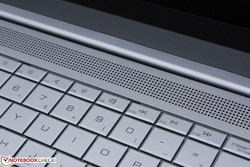
The stereo 1.5 Watt speakers provide muffled sounds. Bass is severely lacking, so listening to music is a below average experience. Maximum volume is reasonably loud with enough power to fill a small conference room. However, external 3.5 mm speakers or earphones are highly recommended for movies and music.
Battery Life
The integrated 51 Wh Li-Ion polymer battery is advertised to provide a 7-hour runtime. While the notebook can certainly achieve this, the conditions required must be at minimum brightness with wireless radios disabled and very low processing loads. Instead, users can expect 3.5 hours of constant use under our more realistic WLAN stress conditions, which loops a browser script on a screen brightness of 150 nits (setting 4/10).
Total runtimes are just about average compared to other 14-inch notebooks, if not a little below. We expected a bit longer from the relatively large battery capacity of the Vizio.
| Vizio CT14-A0 51 Wh | Lenovo IdeaPad Z40-59422614 41 Wh | Asus VivoBook S451LB-CA072H 46 Wh | Lenovo Flex 2 14 32 Wh | Dell Inspiron 14-7437 58 Wh | |
|---|---|---|---|---|---|
| Battery runtime | 11% | 31% | -7% | 33% | |
| Reader / Idle (h) | 6.4 | 8.2 28% | 8.1 27% | 7.8 22% | 9.4 47% |
| WiFi v1.3 (h) | 3.5 | ||||
| Load (h) | 1.7 | 1.6 -6% | 2.3 35% | 1.1 -35% | 2 18% |
| WiFi (h) | 6.2 | 5.4 | 5.7 | 6.5 |
Pros
Cons
Verdict
Vizio's first and so far only series of notebooks is a good first effort. The manufacturer gets many of the basics right, including a bright glossy display, an attractive and rigid chassis, and easy maintenance. Such features are becoming more uncommon on Ultrabooks, let alone on a budget offering. We certainly commend Vizio for hitting these marks on its first try.
The most glaring issues don't become obvious until users begin using the notebook. The keyboard is awful in terms of feedback and comfort. Travel is shallow and the keys feel soft. There is annoyingly no card reader, which will inevitably anger owners.
In the end, the CT models don't stand out in neither price or quality. Vizio's lack of experience in this sector is obvious when pit against the likes of Acer, Asus, or Samsung. The manufacturer has yet to announce a series refresh, so it remains to be seen if Vizio will ever return to the notebook market.
Vizio's lack of experience in this sector is obvious when pit against the likes of Acer, Asus, or Samsung.
Vizio CT14-A0
- 06/16/2015 v4 (old)
Allen Ngo




